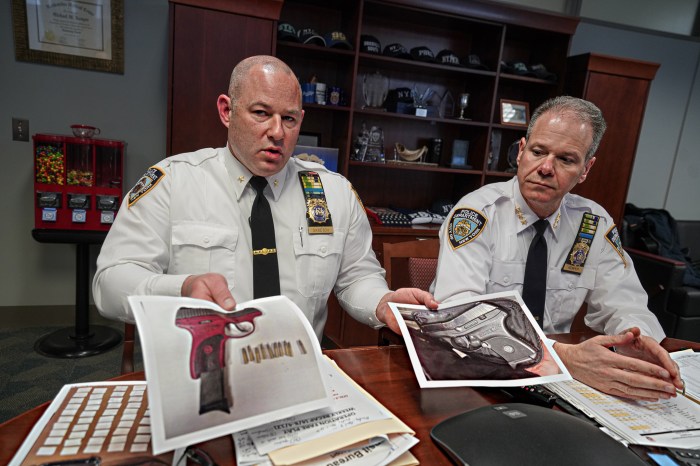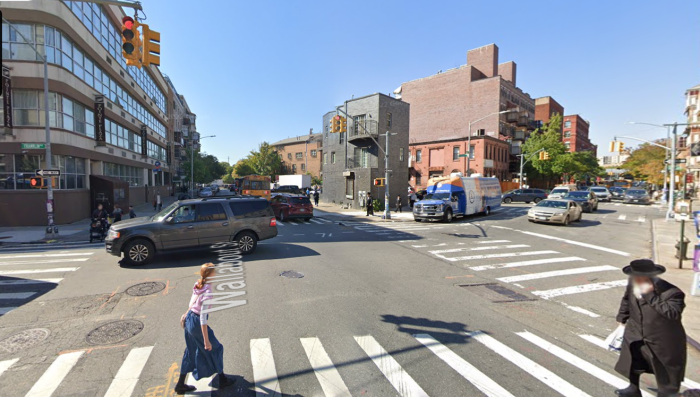
There is a fight brewing over the F train.
Restored express service on the F line was expected to launch this fall, as recommended by the MTA’s Transit committee last year. But as of now, the agency’s full board has no plans to approve that timetable, amNewYork has learned.
“The recommendation to restore F express service is still under consideration,” said Beth DeFalco, an MTA spokeswoman. “There are several major F line improvement projects underway or getting started, however, and the timing of any decision must factor those in.”
Last year, the agency released a study on restoring F express service through Brooklyn during peak hours to help relieve some of the longest subway commutes in the city.
“We can’t get to school, we can’t get to work, get to better jobs; we can’t get a better education because we don’t have better mass transit,” said Brooklyn Councilman David Greenfield, who referred to the line as “the F-Bomb in Brooklyn,” at a news conference announcing a new advocacy campaign for express service.
The MTA study, though, suggests service cuts for brownstone Brooklyn, which has driven a wedge between residents along the route — Park Slope versus Coney Island.
“It adds no service to the line — instead it simply pits Brooklyn residents against each other,” said Brooklyn Councilman Brad Lander, who represents Park Slope, in a statement.
Express F trains would run between Coney Island-Stillwell Avenue and Jay Street-MetroTech stations during morning and evening rush hours. But since the MTA doesn’t have the rolling stock or track capacity to add more trains to the line, current F service would be split: half of all trains would run locally with the other half running express. That means commuters at the six designated local stops would have to wait longer for a local F.
DeFalco pointed to three ongoing or planned infrastructure improvement projects — including one to modernize ancient signal technology — as justification for the agency’s trepidation. An added uncertainty: the looming L train shutdown is also expected to send commuters flocking to the M and G trains, which share tracks with the F.
Greenfield, a staunch supporter, believes there were other reasons at play.
“It has to do with something called politics,” Greenfield said. “You see, the closer you get to Manhattan, the richer the people become. And those richer people on the way to get to Manhattan — they have seven, eight, nine, 10, 11, 12 different trains they can take. We only have one, two, three or four here in Southern Brooklyn.”
Councilman Mark Treyger, another proponent of the service, pointed to the recent growth of Coney Island and Mayor Bill de Blasio plans to build thousands of affordable and market-rate housing units in the neighborhood.
“This area cannot become the full destination that people envision it to be unless we make infrastructure and transportation investments,” Treyger said. “We’re asking for our fair share.”
Opponents like Lander and Borough President Eric Adams have attacked the plan for skipping some of the busiest stations in booming neighborhoods. The six stops that express trains would bypass account for nearly 40% of all F line boardings in Brooklyn during typical morning rush hours.
Gowanus and Carroll Gardens are not what they were in 1987, the last time the F train ran express. In fact, 51% of F riders would see their commutes increase by a minute or two each day as they wait a bit longer for a local train. But the 48% of express riders would see their commute times decrease an average of three minutes.
“Some of those stations have lots more people and lots more commuters now. The crowding would be immense at some of the bypassed stations,” said Andrew Albert, an MTA board member, who believes the MTA should refine its F express proposal so that only less busy stations further away from Manhattan are skipped. “To me, a much better idea would be to start an F express south of Church Avenue.”
Without adding more trains, express service wouldn’t address another critical issue on the F line: jam-packed cars.
“It would be an interesting experiment but, as I understood it from the beginning, it was never going to solve the severe overcrowding on the F line because of the simple volume,” said Tom Angotti, a planning professor at Hunter College.
Lander wants the MTA to draw up a new vision that all of Brooklyn can agree on.
“What we actually need is a new plan that will improve service on the F line for all riders, at local and express stops that are thoroughly vetted by the community,” Lander said in a statement. “We don’t need F service that’s even less dependable than it is now.”

















